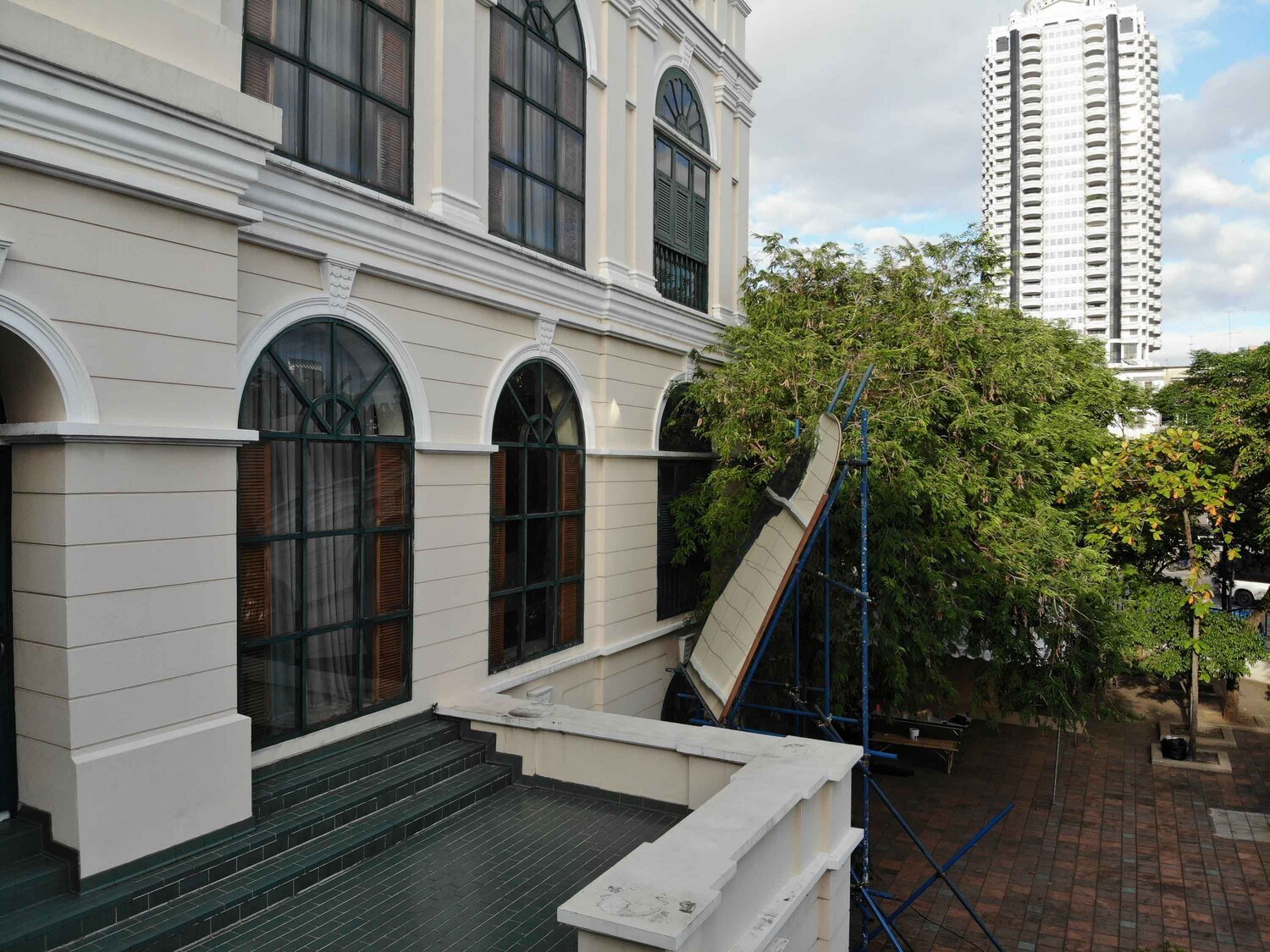Harit Srikhao
World-building through photography
By Ian Tee
Harit Srikhao, ‘Whitewash’, 2015-16, exhibition view at ‘Foam Talent’ (2018) at Kasseler Kunstverein, Frankfurt, Germany. Image courtesy of the artist.
Harit Srikhao is a storyteller with a distinctive visual language. Born in 1995 in Thailand, his works blend reality and fantasy, often taking local issues and personal experiences as points of departure. His engagement with the medium of photography highlights the complex layers beneath the construction of images and its relationship with propaganda.
Harit holds a BA in Photography and Applied Art at King Mongkut's Institute of Technology Ladkrabang (Bangkok, Thailand) and a master’s degree in Photography and Visual Design from Nuova Accademia di Belle Arti (NABA), Italy. He has exhibited extensively around the world, at Muse de llyse, Switzerland (2015), Kathmandu Photo Gallery, Thailand (2015, 2017), Foam Fotografiemuseum, Netherlands (2017), and Leipzig International Art Programme, Germany (2020), among others. His work is recognised by several international awards including the Prince Claus Seed Award (2021), Young Portfolio in Invisible Photographer Asia Awards (2018) and Foam Talents (2017).
Spread from Harit Srikhao’s photobook ‘Whitewash’ (2018), published by AkinaBooks. Image courtesy of the artist.
Spread from Harit Srikhao’s photobook ‘Whitewash’ (2018), published by AkinaBooks. Image courtesy of the artist.
‘Whitewash’ (2015-16) is a significant body of work that exemplifies Harit’s approach. Its title is a nod to the artist’s memory of “Bangkok Big Cleaning Day” in May 2010, that happened after the violent military crackdown against political protesters. Organised by the Bangkok Metropolitan Administration, it was a campaign for volunteers to help the city clean up after the destruction caused by two months of political demonstrations. In this project, Harit revisits his memory of the event and grapples with the propaganda machine that framed his initial response to the protests.
For Harit, “Big Cleaning Day” represented a suppression of guilt from the past, to sweep history under the rug, to whitewash. In an interview with Fountain Ink from 2019, Harit said that “the work is based on the reality of surreal phenomena in Thailand”. He aimed to recapture the emotions of that period, made from fragments which are part recreation and part fantasy. Harit used a range of digital and analogue techniques, such as cut-and-paste collage and chemical manipulation on photo negatives. The outcome are haunting images that hint at the violence exercised, and also the ignorant complicity.
Harit Srikhao, ‘Scintilla’ from the ‘Incubus’ series. Image courtesy of the artist.
Harit Srikhao, ‘Bêtes Éternelles’, 2022, exhibition view at Gallery VER, Bangkok. Image courtesy of the artist.
Another recent work that speaks overtly to Thai politics is ‘Scintilla’ (2018). The work is a tribute to Pakapong Tanyakarn, a young cadet who died from brutal harassment in military school in 2017. Harit restaged the punishment detailed in Pakapong’s journal, visualising the unseen pain endured by the cadet. Here, the figure is seen in a painful headstand position, wrapped by fairy lights. The second work in the series is a collection of photographs of shaved heads, taken from a top-down perspective. In both works, the subject’s identity is removed and their bodies an outlet for violence.
Coincidentally, news of Pakapong’s death broke out during the period of King Rama IX’s royal funeral. Though the two events are unconnected, they bring to the fore how power is embedded into the institutions of monarchy, military and religion.
Harit Srikhao, ‘Bêtes Éternelles’, 2022, exhibition view at Gallery VER, Bangkok. Image courtesy of the artist.
In his solo exhibition ‘Bêtes Éternelles’ in 2022, Harit showed recent works that look into the state’s attempts at controlling and co-opting the youthful body. The photos of shaven heads in ‘Scintilla’ are presented as a floor vinyl that puts the audience in the perspective of the abuser, looking down and literally stepping on the heads of young men.
This is seen alongside the ‘Anima’ series, taken at the factory that produced prototypes for national monuments and statues. For these “portraits”, Harit isolated the concrete-cast samples and photographed them against a neutral grey background. Raw and fragmented, they are seen in a different light outside of the mechanisms of propaganda. The concept of life-casting is central to the exhibition, as Harit questions what these bodies are being “moulded into”.
Click here to read our dialogue with Harit Srikao.












